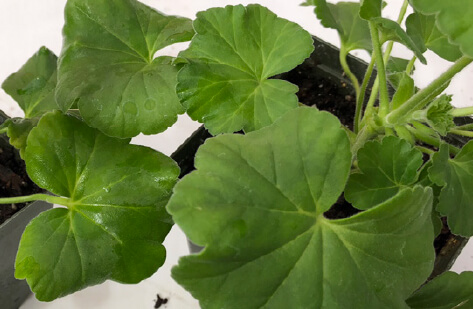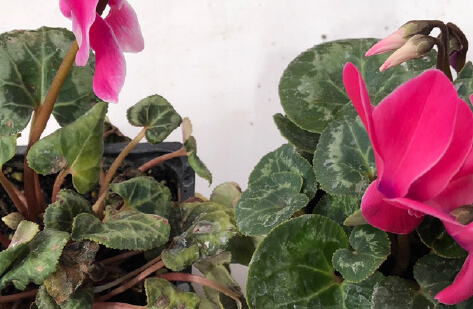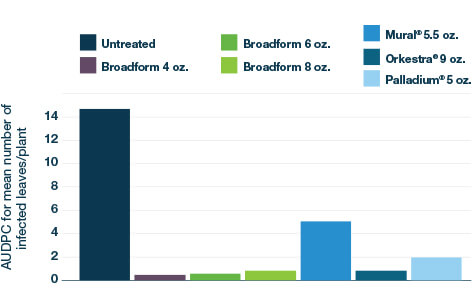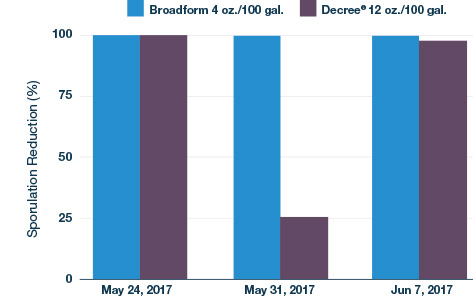Broadform fungicide consistently demonstrates strong control of botrytis and other diseases
Broadform fungicide consistently demonstrates strong control of Botrytis and other diseases important to the greenhouse industry – including leaf spots, powdery mildew, and black spot of rose – in both internal trials and trials conducted with university cooperators.
The dual modes of action in Broadform, provided by the combination of fluopyram, an SDHI, and trifloxystrobin, a QOI, deliver long-lasting disease management and act quickly to control disease preventively. Due to its concentrated formulation, trials have shown that rates of Broadform as low as 4 oz./100 gal. provide excellent Botrytis control (Fig. 1. Botrytis trial on Geranium).
|
Fig. 1 Botrytis trial on Geranium. |
Fig. 2 Anthracnose trial on Cyclamen.; |
In trials side-by-side with key competitors the Botrytis activity provided by fluopyram is particularly apparent (Graph 1), with even the lowest label rate of Broadform providing nearly 100% control.
Beyond overall disease control, Broadform also reduces sporulation from active lesions (Graph 2), which can prevent spread of the pathogen throughout the greenhouse.
The fluopyram component of Broadform has a unique structure compared to other SDHIs, and multiple peer-reviewed studies have demonstrated that strains of the Botrytis pathogen resistant to one or more SDHI chemistries maintain sensitivity to fluopyram. While it is still a member of FRAC group 7 and should be rotated with chemistries from other FRAC groups, this means that Broadform is a potential solution in situations where other SDHIs no longer provide effective suppression of Botrytis.
Beyond Botrytis, Broadform has performed very well in trials against powdery mildew black spot of rose, anthracnose (Graph 3; Fig. 2. Anthracnose Trial on Cyclamen), Rhizoctonia stem rot, and leaf spots caused by species of Septoria and Alternata. With this spectrum of activity and the introduction of a new active ingredient to the industry with fluopyram, Broadform will be an excellent new disease management option for greenhouse ornamentals production.





